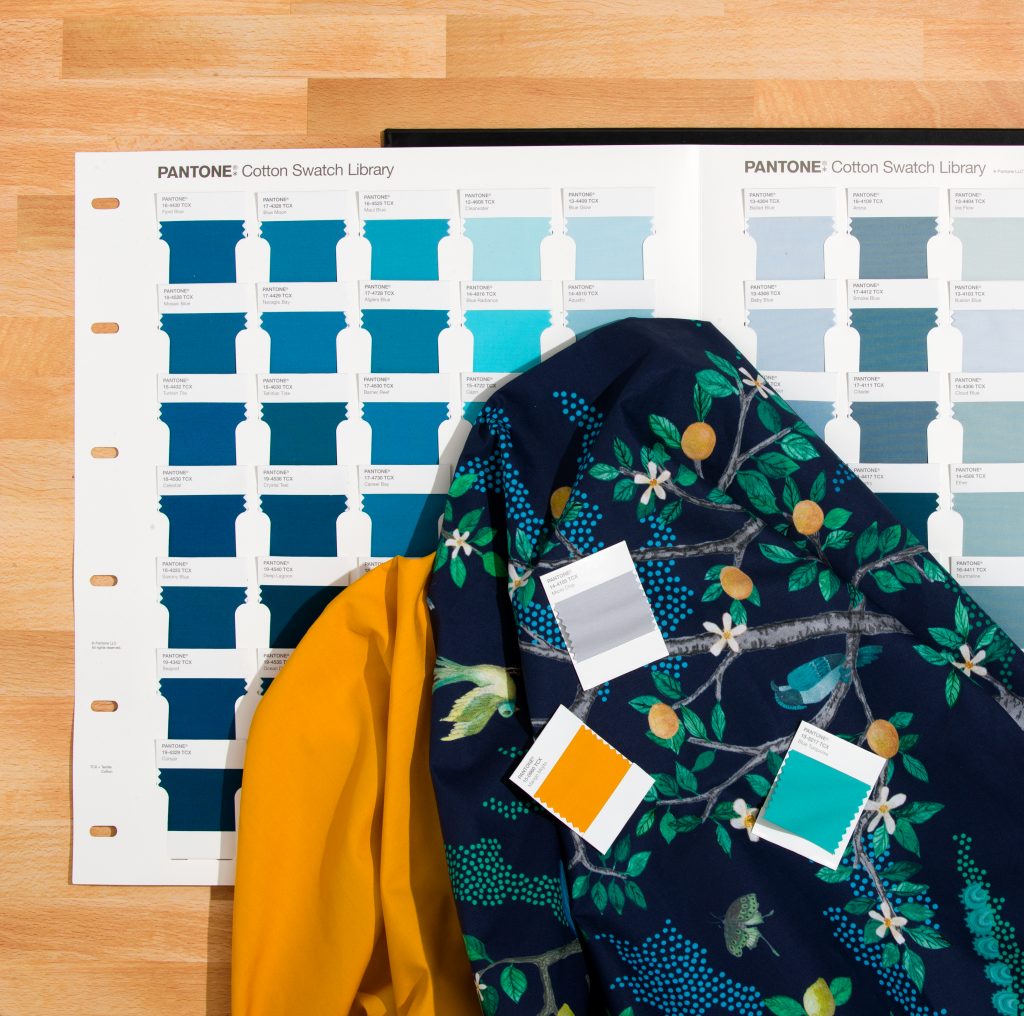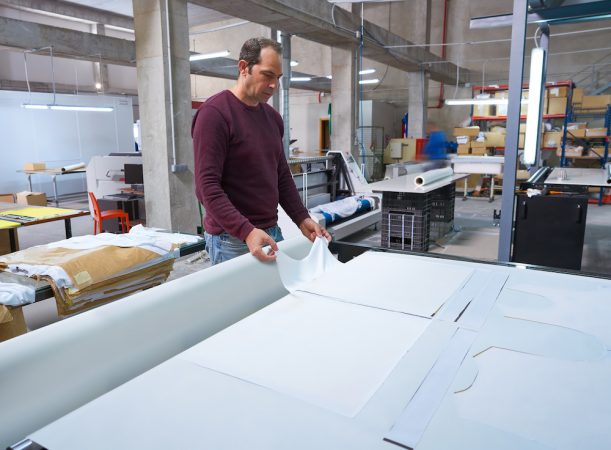
Features
Printing
Textile
New concepts in DTG printing
A growing number of systems make DTG printing fast and affordable
December 1, 2021 By Abhay Sharma
 For textiles and fabrics, the Pantone colour swatch library is printed on cotton, polyester and nylon. Photo courtesy Pantone
For textiles and fabrics, the Pantone colour swatch library is printed on cotton, polyester and nylon. Photo courtesy Pantone Garment and textile printing offer new opportunities for commercial printers who are seeking to diversify businesses. Many of the concepts of a textile-creation workflow, such as short, digital print runs, PDF workflows and Pantone, may be familiar to the commercial printer, but there are new constraints like swatches on cotton, nylon and polyester to contend with. Further, instead of grain direction we may consider direction of the weave. In this article, the author explores many “print transferable skills” and describes new concepts in direct-to-garment (DTG) and textile printing.
There are two main applications of printing on fabric: DTG and textile printing. Through DTG, one is transferring a design to a pre-existing garment, such as a T-shirt or football jersey. This may be done in many ways including via a conventional silk screen, a thermal transfer process or directly by inkjet onto a specific garment.
Another growing category is printing of the textile or fabric that is later cut and sewed into shirts and skirts, bed spreads, cushions or curtains.
In both, we may consider the advantage of a digital workflow (i.e. shorter print runs, easy prototyping and using the same material for proofing and production).
Growing areas of business
Author and marketing consultant Cary Sherburne describes how “new manufacturing operations are stepping up to the challenge of delivering apparel on demand. Since labour rates in Asia are lower than in the West, manufacturers in North America must leverage technology to compete, and that’s what many of these relatively new businesses—often called microfactories—are currently doing.”

Direct-to-garment and textile workflows have many familiar steps from client brief and colour swatches to creative design and production. Photos courtesy Abhay Sharma
Adobe Textile Designer plug-in
In early 2020, Adobe released in beta version a Photoshop plug-in called Textile Designer that provided a link from creative designers to the DTG market. It was popular and used widely until the beta program closed in June 2020. In June 2021, Adobe announced a partnership with Aquario Design and NedGraphics to deliver Adobe Textile Designer technology as a plugin from Aquario.
Adobe’s plug-in points to the benefits of a PDF workflow, the same benefits that we’ve been enjoying in print, such as the ability to have separate ICC colour profiles for different parts of the artwork, resolution-independent vector or bitmapped graphics, and to store the cutting/dieline information in the same file.
Previously, Adobe generously provided the PDF (and TIFF) specification to the print community, and since 2008, the specification has been an open, international standard—ISO 32000—to be freely used and implemented by all parties. An important concept that we learn from VDP and direct mail is the efficient use of repeating elements. An AirMiles or Aeroplan mailing has a fixed number of holiday locations, which are repeated to thousands of recipients. Part of the PDF standard is support for caching of repeating graphical elements to reduce the file size and processing time. For fabric printing with long pattern repeats, we can thus borrow an important caching technology used everyday in the direct mail environment and in VDP.

A single PDF file can contain both the CMYK print information and the associated dieline cutting pattern.
Pantone swatches
Most printers are aware of the Pantone Formula Guide with around 2000 colour swatches. The books are printed on coated and uncoated paper to closely mimic the type of paper you may be using and ensure a closer colour match. Of course, we need to use fabric swatches for fabric printing, so Pantone has a growing division called Fashion, Home + Interiors (FHI). Akin to the original coated and uncoated formula guides for printing, the fabric swatches are printed on cotton, polyester and nylon.
“Our colour system centres on the Pantone Swatch Card that is made on double-layered fabric and has been formulated for colour fastness and colour constancy. Cotton is the industry standard substrate as well as the best substrate to represent colour for multiple fabrics. The swatches are made here at our headquarters in Carlstadt, N.J., where the colours are formulated, dyed, treated and conditioned. They are evaluated and approved by our textile quality manager. Then they are packaged and put into stock for all our clients worldwide,” explained Tannese Williams, product manager, Pantone.
The Pantone swatch card is produced to within a 0.5 Delta E tolerance to ensure colour consistency and is provided with spectral data. The reference illuminant in textiles is D65, so the Pantone swatches are measured with CIE Illuminant D65, compared to D50 that is commonly used in North American printing.
Zazzle.com
We need a connection between the customer/client, designer and design software and a file format that can contain and communicate the design and colour data in an unambiguous manner. We need the ability to direct the output at different resolutions (S, M, L, XL, XXL), have printing equipment to print the correct colours and finishing technology to cut and finish the item.
While there are many solutions on the market, Adobe has partnered with Zazzle.com for your baby grow, T-shirt or bachelorette parties. Just like we have RIPs and workflows in the print space, we have dedicated software for apparel printing that’s similar to the Apogee, Esko, Prinect and Prinergy systems. In DTG printing, the software systems tend to be smaller, nimbler and more fun. In textile printing, the software may assist the user in developing the pattern, including 0.75, 1, or 1.5 spacing on the repeat, any “gutters” the repeat makes and “ganging up” for optimum use of material.
While seeing your design on a T-shirt is fun, there is also a serious business model and commercial opportunity in this field. It is a possibility due to a growing number of printing and finishing systems that make DTG printing fast, efficient and affordable.
Abhay Sharma is a professor at Graphic Communications Management, the Creative School, Ryerson University, Toronto.
This article originally appeared in the November 2021 issue of PrintAction.
Print this page